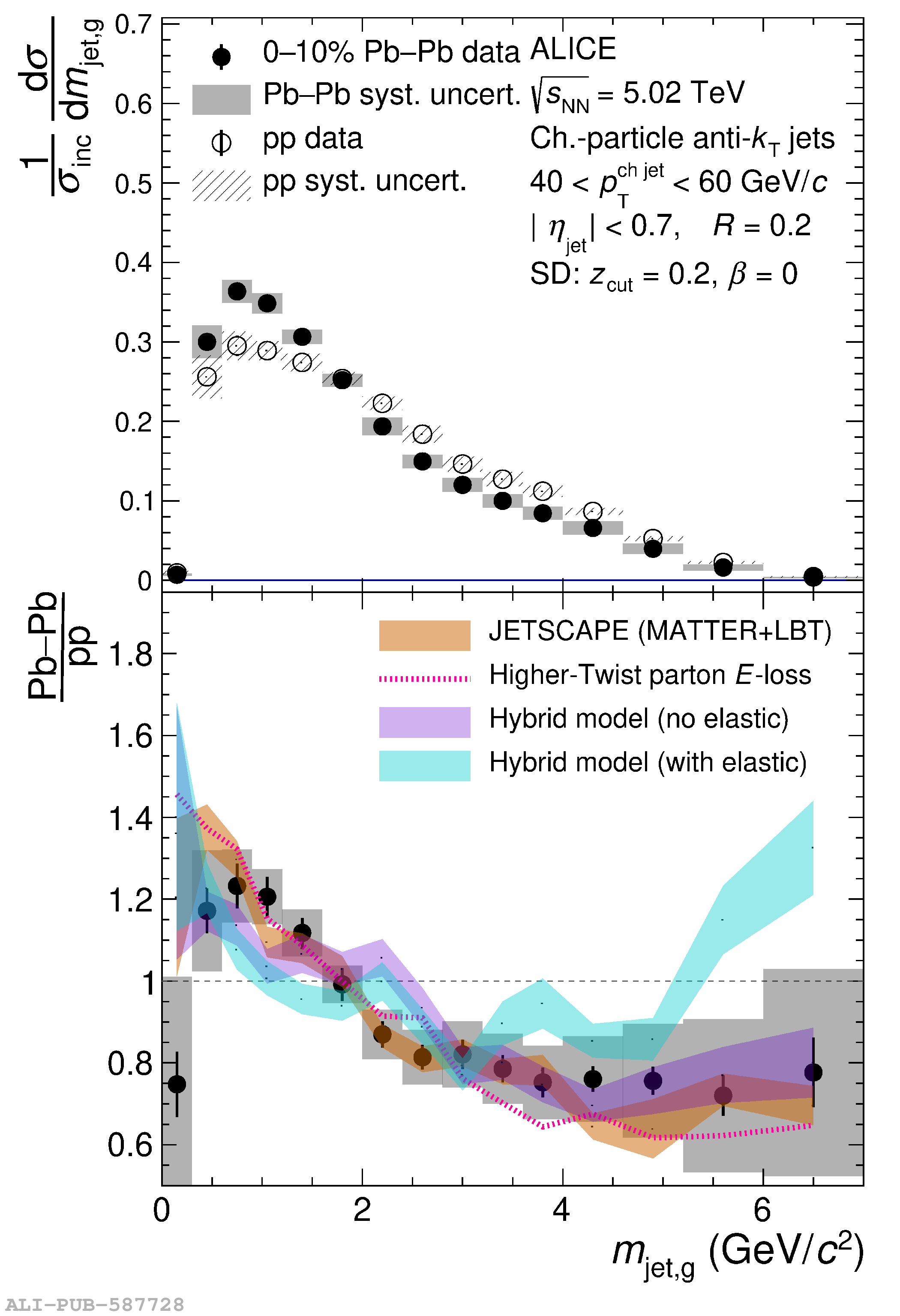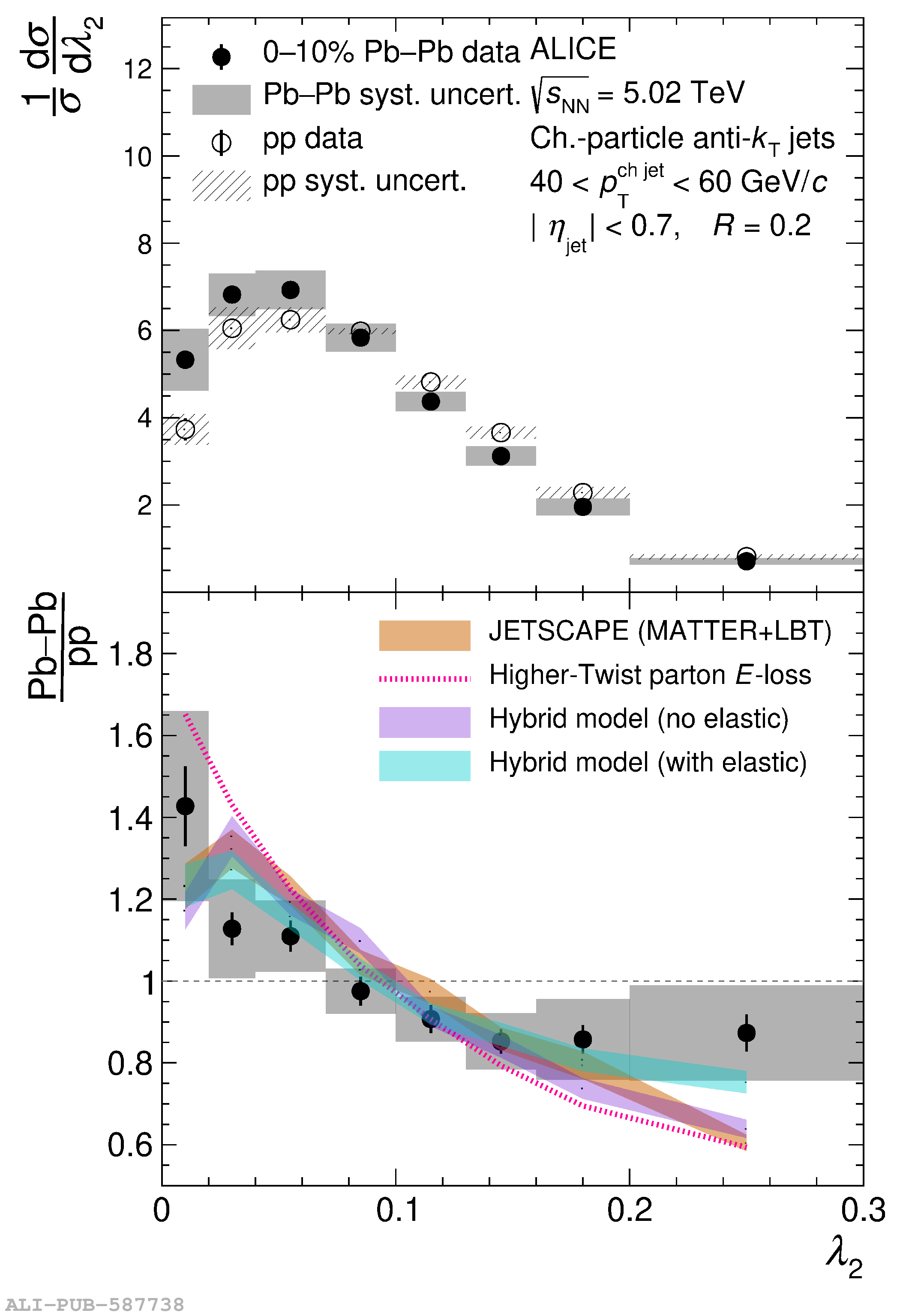The ALICE Collaboration presents a new suite of jet substructure measurements in Pb-Pb and pp collisions at a center-of-mass energy per nucleon pair $\sqrt{s}_{\rm NN} = 5.02$ TeV. These measurements provide access to the internal structure of jets via the momentum and angle of their constituents, probing how the quark--gluon plasma modifies jets, an effect known as jet quenching. Jet grooming additionally removes soft wide-angle radiation to enhance perturbative accuracy and reduce experimental uncertainties. We report the groomed and ungroomed jet mass $m_{\rm jet}$ and jet angularities $\lambda_\alpha^\kappa$ using $\kappa=1$ and $\alpha>0$. Charged-particle jets are reconstructed at midrapidity using the anti-$k_\mathrm{T}$ algorithm with resolution parameter $R = 0.2$. A narrowing of the jet mass and angularity distributions in Pb-Pb collisions with respect to pp is observed and is enhanced for groomed results, confirming modification of the jet core. By using consistent jet definitions and kinematic cuts between the mass and angularities for the first time, previous inconsistencies in the interpretation of quenching measurements are resolved, rectifying a hurdle for understanding how jet quenching arises from first principles and highlighting the importance of a well-controlled baseline. These results are compared with a variety of theoretical models of jet quenching, providing constraints on jet energy-loss mechanisms in the quark--gluon plasma.
Phys. Lett. B 864 (2025) 139409
HEP Data
e-Print: arXiv:2411.03106 | PDF | inSPIRE
CERN-EP-2024-283
Figure group








